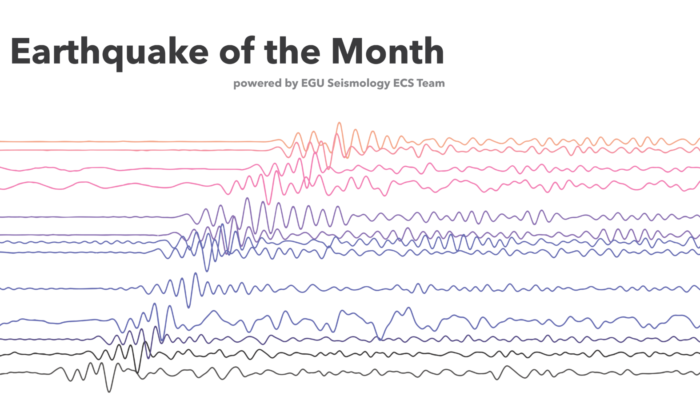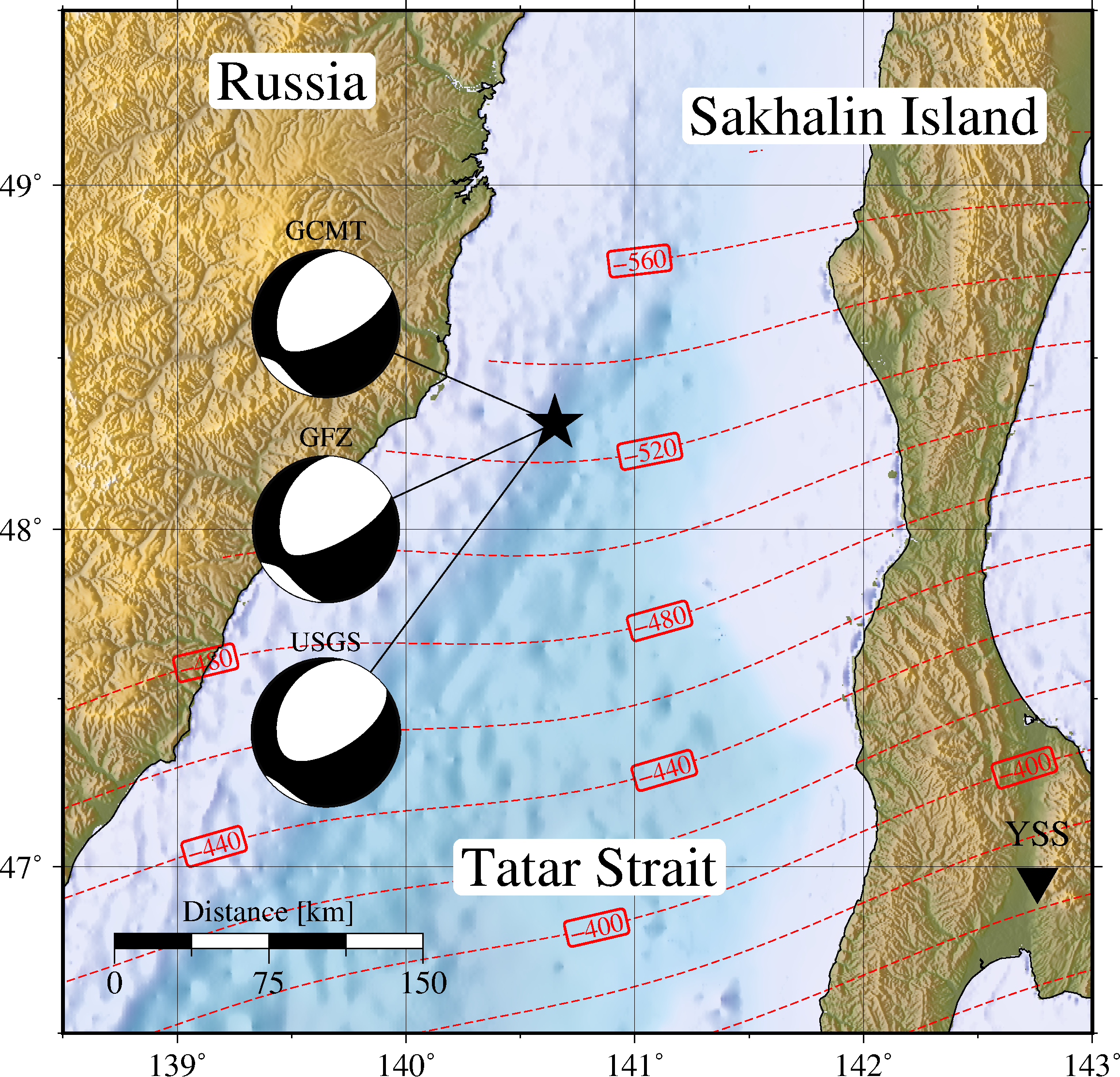
November was not highlighted by a large event (> M 7). However, the TOP 3 of the largest earthquakes include a deep focus rupture on November 30th in the Tatar Strait between eastern Russia and Sakhalin Island (Figure 1). This earthquake (M 6.4) occurred at a depth of ~600 km according to different seismology agencies. The moment tensor representation shows an oblique mechanism with a dominant normal rupture (USGS1, GEOFON2, EMSC3).

Figure 1 | Location of the deep earthquake in Russia (black star). Focal mechanism calculated by GCMT, GEOFON and USGS. The closest station YSS is shown in an inverted triangle (Credit: Javier Ojeda). Contours in red are from Slab2.0 (Hayes, 20184).
The earthquake occurred in a prone region for deep earthquakes localized at a focal distance greater than 300 km (Figure 2, EMSC). The zone below the Tatar Strait hosted two large deep events in 1939 (M 7.0) and 1990 (M 7.2).
The closest station that recorded this event, YSS from the IU network (freely available in IRIS), is located at >200 km distance from the earthquake. As expected, we can see a clear P and S arrival due to the large focal depth. Figure 3 shows ~50 vertical component records from the deep earthquake as well as the theoretical P and S wave arrivals predictions (IASP91 model).

Figure 3 | Record section plot for the deep earthquake in Russia at first 30° distance. The plot is made using @obspy (Credit: Javier Ojeda).
Although most earthquakes are shallow, around one-quarter of the seismicity occur below 70 km depth. We can distinguish between intermediate-depth earthquakes (70-300 km) and deep earthquakes (>300 km) (Figure 4).
Deep events remain a challenge to explain since the occurrence, mechanism and complex rupture propagation can change under different conditions. Phase transformation of metastable olivine, dehydration embrittlement, and thermal runaway are the three leading mechanisms for deep earthquakes, but many open questions remain to understand the deep earthquake physics (Zhan, 2020).

Figure 4 | (a) Depth distribution of earthquakes, where shallow events are outside of the plotting range. Red histograms show the seismicity in the Tonga subduction zone. (b) Deep earthquakes and relations with slabs (Zhan, 20205 ).
TOP 3 – November earthquakes
Tatar Strait earthquake (Russia) – 30th November – M 6.4
San Antonio de Los Cobres earthquake (Argentina) – 30th November – M 6.3
Hihifo earthquake (Tonga) – 7th November – M 6.1
References
-
- 1 https://earthquake.usgs.gov/earthquakes/eventpage/us7000clbu/executive
- 2 http://geofon.gfz-potsdam.de/eqinfo/event.php?id=gfz2020xnzk
- 3 https://www.emsc-csem.org/Earthquake/earthquake.php?id=925560#map
- 4 Hayes, G., 2018, Slab2 – A Comprehensive Subduction Zone Geometry Model: U.S. Geological Survey data release, https://doi.org/10.5066/F7PV6JNV.
- 5 Zhan, Z. (2020). Mechanisms and implications of deep earthquakes. Annual Review of Earth and Planetary Sciences, 48.
This blog post was written by ECS representative Javier Ojeda
with revisions from ECS representative Maria Tsekhmistrenko

